Marta, let's start with the concept.
This exhibition is called Before the Future. It is based on the Ukrainian part of Taiwanese artist Isa Ho's research into the stories of Ukrainian women artists during the full-scale invasion. It consists of photographs of 15 heroines from the video project. But this exhibition also includes Isa's previous research—Taiwanese and American. She is an institutional artist who works on long-term research projects. These are not just photographs for the sake of photography. They are a lot of research, people's stories, documentary projects.
As the curator and founder of Gallery 101, especially when the full-scale invasion began, I focused on grassroots cultural diplomacy. My projects also have a significant documentary component. I have a podcast and a group called
Culture Against Aggression. In the early days of the full-scale invasion, my colleagues and I gathered in one of the galleries, which had a basement, because there were frequent alarms at the time and no one knew what was happening. We thought about how we could be useful and contacted colleagues throughout Ukraine. That's how the idea to start this group came about. I started it, began running it, and that's how it all came together.
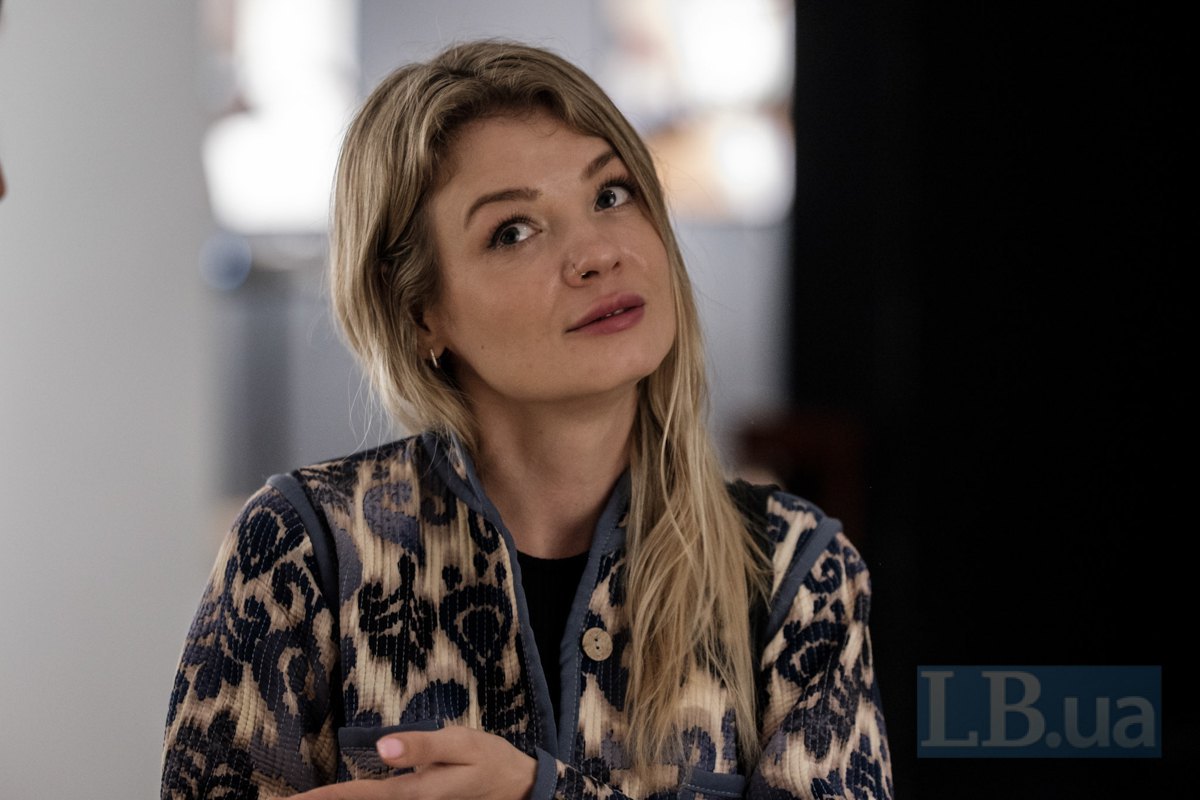
How did you decide to do a project with Isa Ho?
My husband is a well-known traveller, Orest Zub, and since we travel a lot, we have colleagues and acquaintances in different parts of the world. And when the full-scale invasion began, he switched all his channels to English to tell the truth about what was happening. Journalists from Taiwan began to contact him. We visited Taiwan many years ago and really liked the country. I said, ‘Great, maybe you can put me in touch with these journalists and we can reach out to someone in the cultural community and collaborate in some way.’ Because my goal at the time, apart from abolishing everything Russian in culture, was precisely this cultural diplomacy. I understood that this was also an information channel through which it was possible to reach many people, especially those in positions of influence who could support Ukraine and understand what was happening.
Moreover, Taiwan has many parallels with Ukraine.
Yes. And then, after some time, I was contacted by a large association, and they invited me. The first time I came, I wrote a project for them, selected three artists, and the four of us spent a month and a half in Taiwan — we had a cultural exchange. The following year, I went again with two artists, and a year later — to work on the idea for this exhibition.
The artist represented here was the head of the association. She became interested in conducting research in Ukraine because her projects deal with women's issues and artistic and social triggers, exploring women's environments in art. For example, she had a ten-year project in New York, which is still ongoing, where she is researching the artist community.
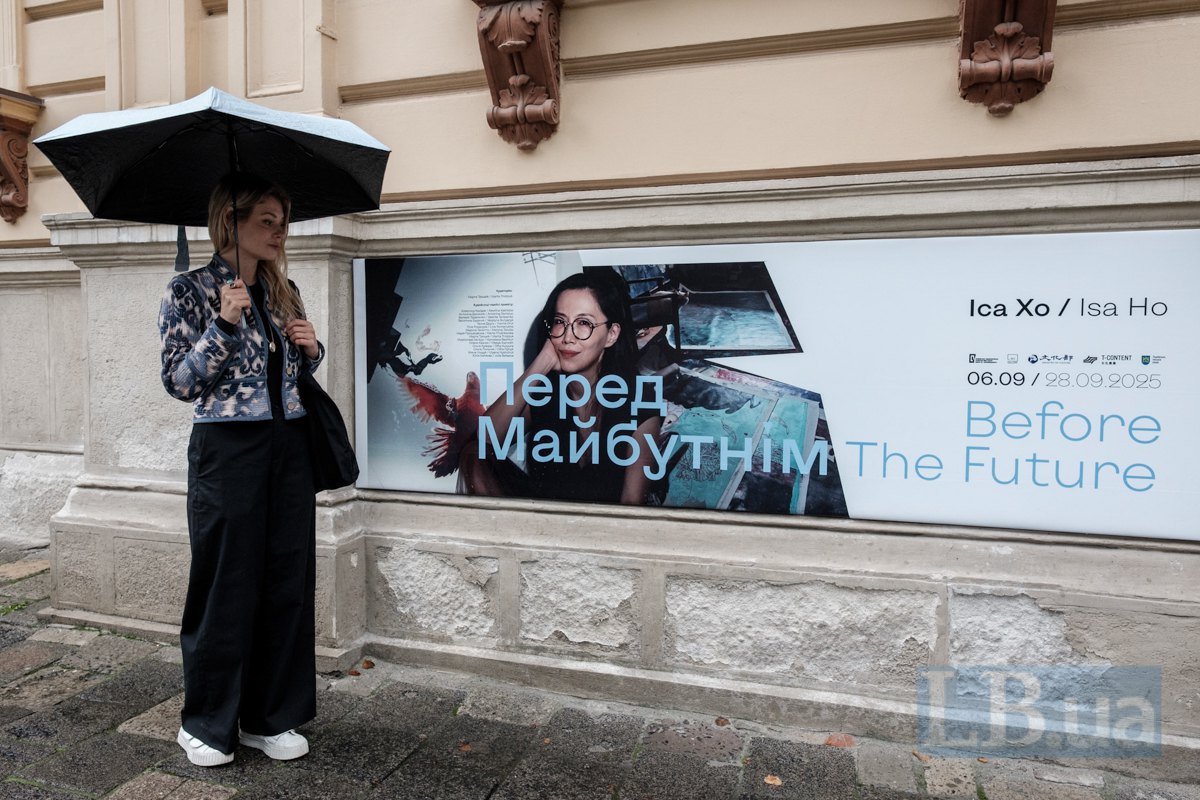
So that's how your collaboration with Isa began?
Yes, we met then, and she became interested in Ukraine. She was also co-curator of the Artist Run Space gallery, which used to work with Russians. I met with her to explain why it wasn't a good idea to do that now. Even if they are loyal and call themselves ‘representatives of Russia,’ I said, ‘Please, if possible, it would be better not to collaborate right now. Invite Ukrainians to take their place, give us a chance.’ And these were very long conversations. As a result, she became genuinely interested and began to explore the topic in more depth. We talked a lot, and she said, ‘I would like to come and explore life here.’ That's how it all started.
The idea came up two years ago, but then a long process began because it required support and funding. She received a grant, and we were supported by the Taiwanese Ministry of Culture. To be honest, that was my goal from the very beginning because, as a representative of Ukraine, I often travel, use the resources and invitations of other countries and colleagues, and I always want to give something in return. There has to be an exchange — a cultural exchange, not a one-way street. I was very happy that we were able to realise this opportunity and bring the artist to Ukraine. This project, Before the Future, explores Ukrainian artists and works great for communication abroad, but at first I wanted to show it right here in Ukraine. Why? Because when we were working on this project in the spring of this year, the artist came for three weeks, and we conducted cultural research in the Lviv and Kyiv regions. We travelled around, talked to artists — these were not just interviews, but rather friendly conversations.
Did she already know who she would be talking to?
I took care of that. I provided her with information in advance and set up the process: the artists filled out a form with questions so that Isa could familiarise herself with and understand the context. It wasn't easy, because the process was complicated — she took notes, shot short videos, and took photos. Since not everyone could express themselves freely in English, and it was important to convey their thoughts accurately, we decided to communicate in Ukrainian: I asked questions and the artist answered. I constantly translated and moderated the conversations — it was very interesting. And through her perspective, through joint discussions of the stories we received, I realised that I see everything completely differently.
When we are in the midst of it all — war, daily tension, constant change — we simply don't notice many things. Yes, we reflect, but we still don't see ourselves from the outside. And through Isa, through her perspective, I suddenly saw us from the outside — and it was a real discovery.
For example, she said, “I can’t read your faces.” She said, “I see you talking, smiling, even joking. But then, when you translate for me, I hear you talking about terrible things. And I don’t understand.”
She thought that perhaps this was due to the difference in facial expressions between our cultures — Asian and Ukrainian. But in fact, it's our black humour. We really have it, and it saves us. It's a peculiarity.
Isa also said something very interesting: ‘You are strong.’ At first, I thought, of course, we fight, we don't give up. But then she added, ‘I've studied other conflicts, different situations that women have found themselves in. In many countries, women give up, lose their strength, shut themselves off. But not you. You are strong. And that deserves respect, it needs to be talked about.’
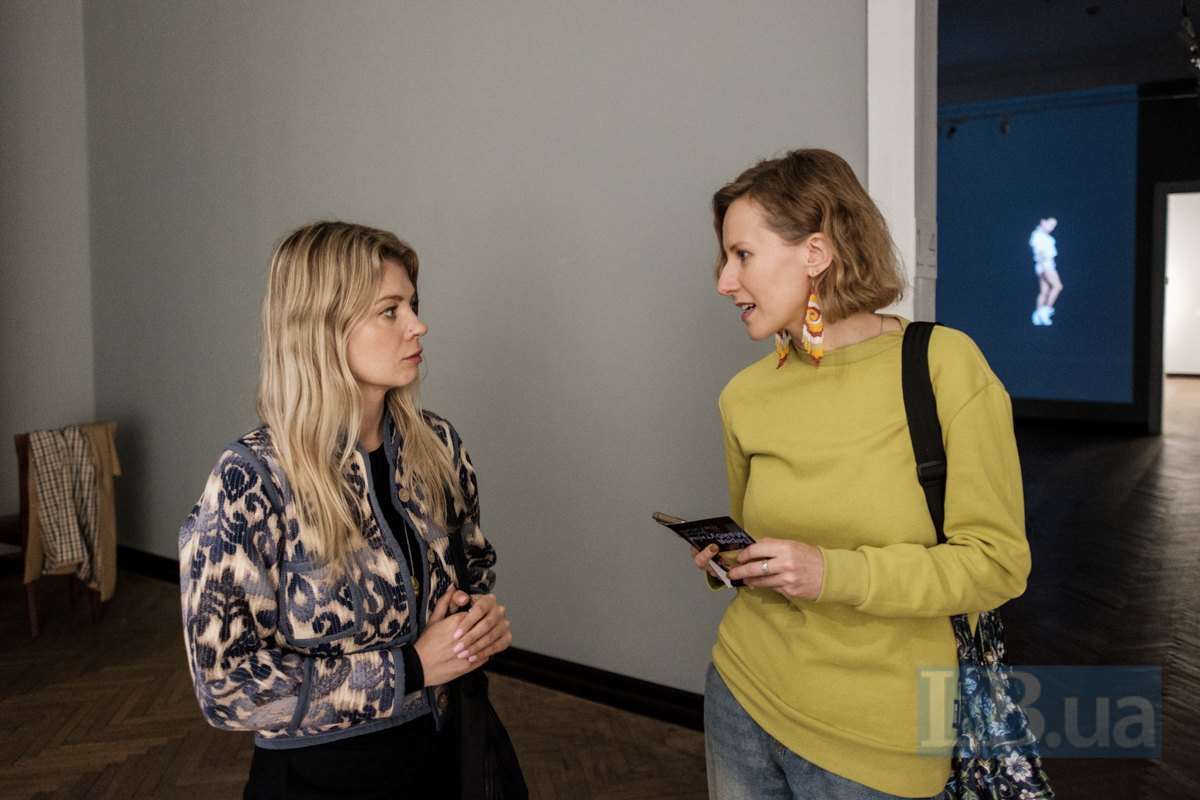
It's very interesting, because we often don't see ourselves from a distance in the present.
She tried to understand why we act the way we do, what shapes us, what causes such inner resilience. And she said one more thing, which I later included in the curatorial text: ‘You are already working on your trauma.’
That is, people usually work with trauma after it has passed. But we live inside it — and at the same time we experience it, digest it, transform it. We are already working with it simply in order to continue living. Isa called this a unique phenomenon. I also thought about it and wanted this exhibition to help us, within the country, to realise this. So that we too could look at ourselves from the outside and understand what work we have already done.
I think this is a very important reflection — especially now, when things are getting harder. And perhaps if we think about what we have already done, it will be a little easier to move forward. And the fact that we are holding up so well may give us a little more inspiration and energy.
Did you film the artists in their studios or did you choose the locations specifically?
Mostly in studios.
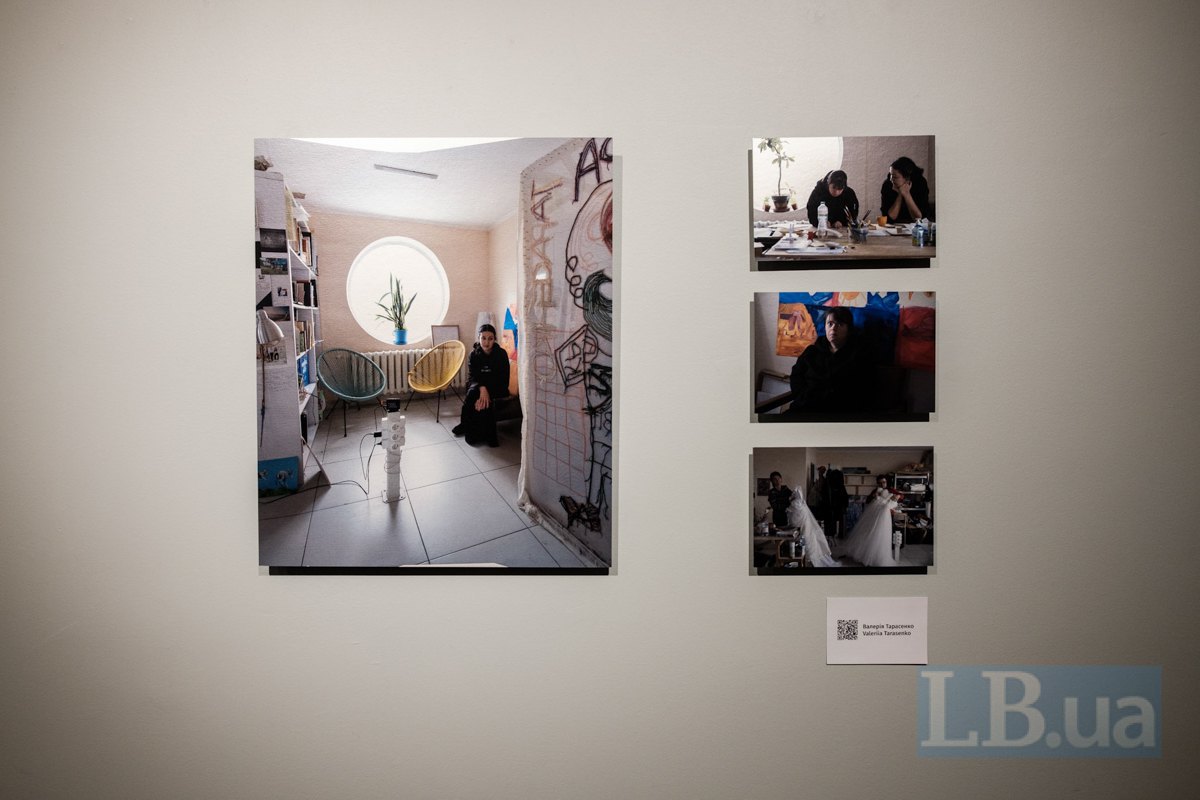
Such beautiful spaces...
These are workshops or homes.
When you walk around and look at the photographs on the dark wall, you see them as a window, as if you are looking into history.
She has a lot of experience. Isa often works on museum projects. Recently, her solo exhibition opened in the Czech Republic.
How did Isa Ho perceive Ukraine, what did she notice?
She was so impressed that she didn't want to leave. She really liked it. She has already found a place to box, knows her favourite shops, and loves our dairy products. There is a stereotype that Asians are lactose intolerant. My goodness, she is already testing all the milk, all the fermented baked milk and kefir! (laughs).
What does the future hold for this project?
Generally, such projects take at least a year to complete. I completed it in a couple of months, and I plan to refine it further with the artist and expand it a little. The next location may be Poland. Part of this project is already on display in the Czech Republic as part of her exhibition. And also, of course, in Taiwan.
In other words, this project is a tool for cultural diplomacy and reflection for ourselves. These were my primary goals from the outset.
Is your curatorial text preserved for other countries, because the Czech Republic and Taiwan are completely different contexts?
I always work with the text. The one currently in the Czech Republic is partly mine, but there is a separate curator there because the exhibition does not focus specifically on this project; it is completely different, but it also features a cross-section of the artist's work, and a book will also be presented. So when this project travels to other countries, I can modify the curatorial text a little bit to make it more contextual, but the structure remains the same. The main ideas and messages remain the same.
The meanings are very similar, it's just that here they are reflected more through our prism. But from the very beginning, I built this project to be very open, sincere, and readable in any country.
No additional explanations are needed here — these are straightforward messages, sincere experiences. These are not pre-prepared interviews. And the artists here have very different stories.
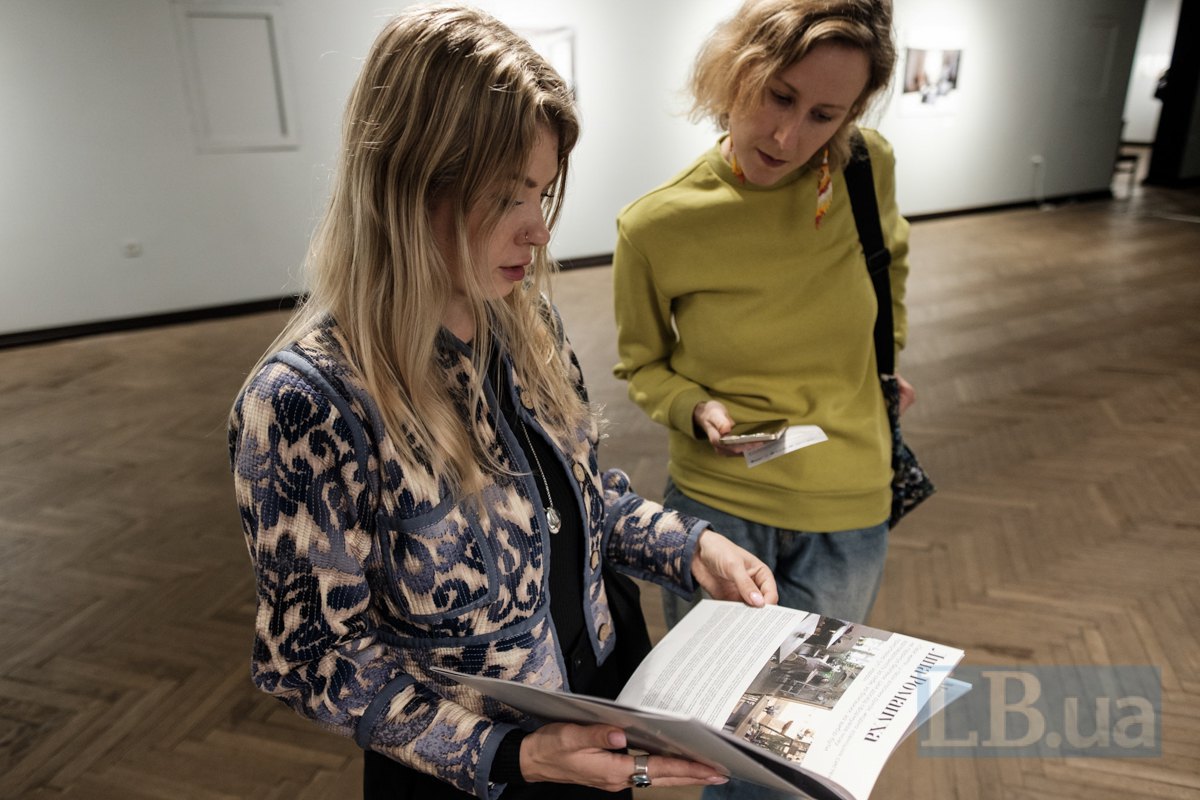
How did you choose them?
I wanted them to come from different contexts, be of different ages, have different backgrounds and locations. Some of them left, then returned. Some stayed here. Some are involved in international projects.
Some, when the full-scale invasion began, froze and could not do anything, and then recovered. Some came to art to reflect, to somehow experience it. After all, visual media are a very special tool.
And I also think that this detailing of stories is important, because someday we ourselves will be telling them.
I see that there are other projects by Isa Ho at the exhibition. Can you tell us more about them?
Yes, she brought other works so that viewers could understand the context and continuity of her research. For example, in the project I Am Snow White, she reflects on the fairy-tale nature of what society sometimes tells us about women and how we see reality. How does it affect us when this fairy-tale meets reality and everything falls apart? It is about violence in various forms — the violence of society's expectations, our own expectations of ourselves as women. After all, they are dictated by what we see — in fairy tales, in the media.
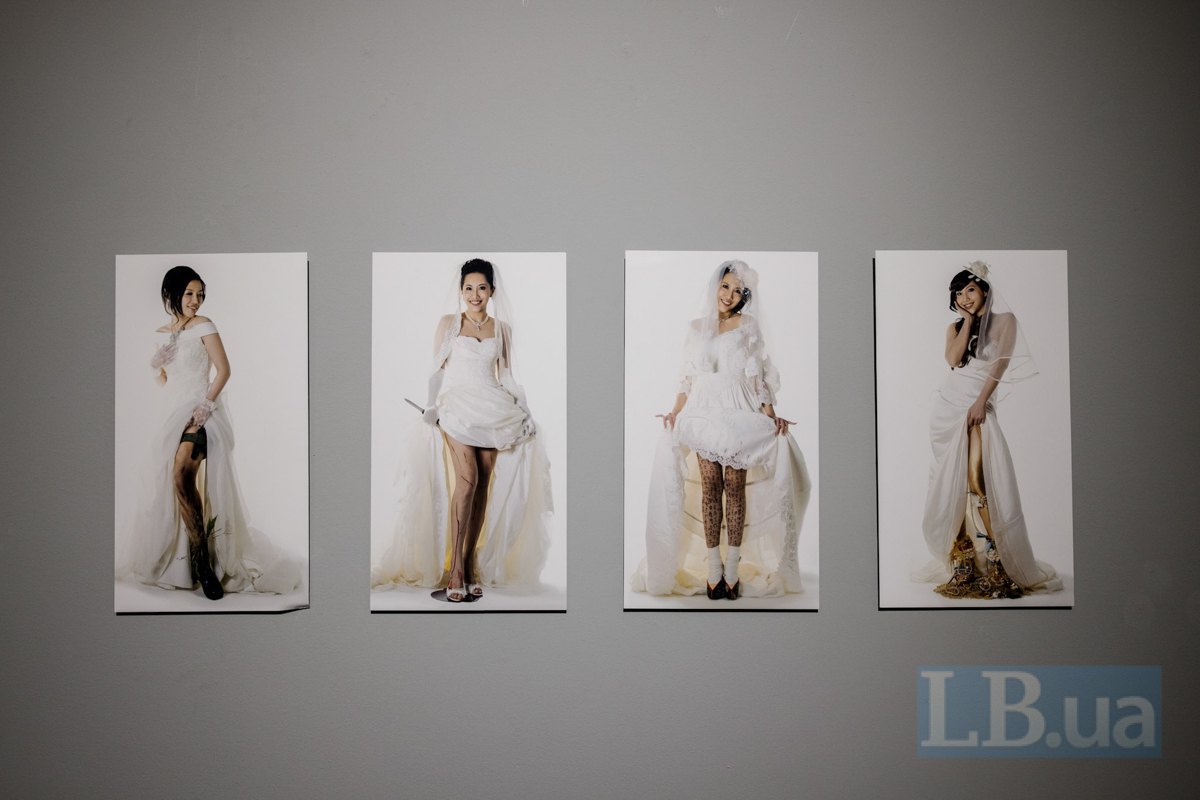
Here, the artist also addresses a very complex topic: how society's expectations of women and how we adapt to them affect us. In the photo, we see Isa herself in the image of a bride. Once upon a time, at least for women, the main goal was to get married, and then everything would be fine. But what lies beneath all this, what is veiled in this process, sometimes does not correspond at all to the ideas imposed on us by society or culture. She likes to look into history, especially that of China. On the bride's foot is an ancient script invented by women in China, which they used to communicate with each other.
China is a major threat to Taiwan...
When she said that Ukrainians are strong, we reflected on the question: what would happen if China attacked Taiwan? Isa replied, ‘It's hard for me to say because we are still trying to understand who we are.’ My personal feeling and impression, since I often visit Taiwan and have communicated with many people — from respected museum directors to young artists — is that they may indeed have issues with self-identification. But to me, as an outsider, the difference is very clear. I have been to China — only to Shanghai, not last year, but a little earlier — but still, this year I can see the difference very clearly. In democracy, in freedom of expression, in the very progressiveness of society. This comparison clearly shows how much Taiwan has evolved as a country over the past hundred years, how much society has taken a completely different path.
The artist said that there is political fragmentation in their society because they are still trying to understand who they are, where they are now, and what they will do if something happens. This is still an open question. When I visit Taiwan, locals often ask me about Ukraine: ‘How are things there?’ When I am in Ukraine, our people ask me: ‘How are things in Taiwan, are they attacking you?’ And when I ask the Taiwanese: ‘How are you preparing?’ they say: "Honestly, we are used to it. We're used to it because China has been bullying us for so many years." And I understand that this is very similar to us. We are also used to Russia. I see great parallels between us. And I really hope that Taiwan will not face the same situation as us.
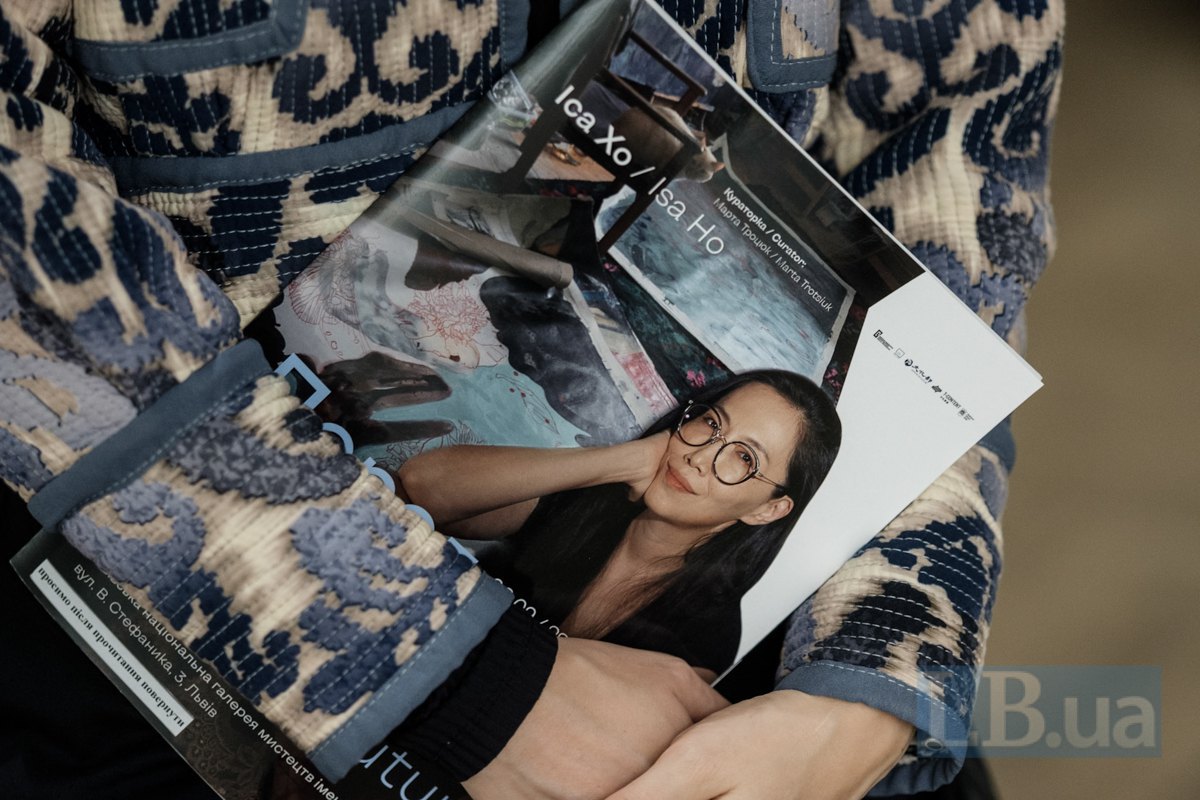
And how relevant was Isa to the Ukrainian context? What questions did she ask Ukrainian artists?
We thought through the questions together. We had a list of questions that we definitely wanted to ask, but of course, the conversations flowed naturally. Each artist had her own unique experience. Accordingly, some of the first questions were similar, while others needed to be explored because they were very context-specific. But then everything turned into a sincere conversation. It was a frank conversation between colleagues about our experiences.
What did she focus on?
She was interested in everything and at first did not understand why many Ukrainians left at the beginning of the invasion and then returned, living here under shelling, especially in Kyiv, where the situation is worse. She could not understand why you did not leave. At first, she was surprised why we were doing this with such courage and determination. She tried to understand it. Then, after talking to many people, she gradually got the context.
When Isa first arrived, I was most struck by the fact that I immediately told her: we are in Lviv, the situation here is not so difficult. I will show you some very beautiful places: one of the best cafés, restaurants, wonderful galleries. You will see a high level of service, cuisine and cultural life. But you will also see people without limbs, soldiers, burials. She lived on Svobody Avenue and sent me a video, asking, ‘Marta, what's going on?’ She filmed people walking in a procession, music playing, them kneeling. I explained that it was a funeral procession for our soldiers. In the early days, she was very impressed by this. She was overwhelmed by the realisation of what was actually happening.
Later, she also visited the Lychakiv Cemetery. At first, she gradually integrated this experience. When she returned to Taiwan, it was very difficult for her to work with the material because the topics were extremely complex. Each story is very difficult, but there is also room for inspiration. The war continues. And we don't know what will happen next. Unfortunately, we cannot yet say that everything is over and that there will be a happy ending. What happens next is unknown. It was morally difficult for Isa. She was also preparing for two exhibitions at the same time. We must give her credit — she is an extraordinary professional, which is why she was able to do it. Because, I think, a young artist with little experience might not have known how to deal with this.
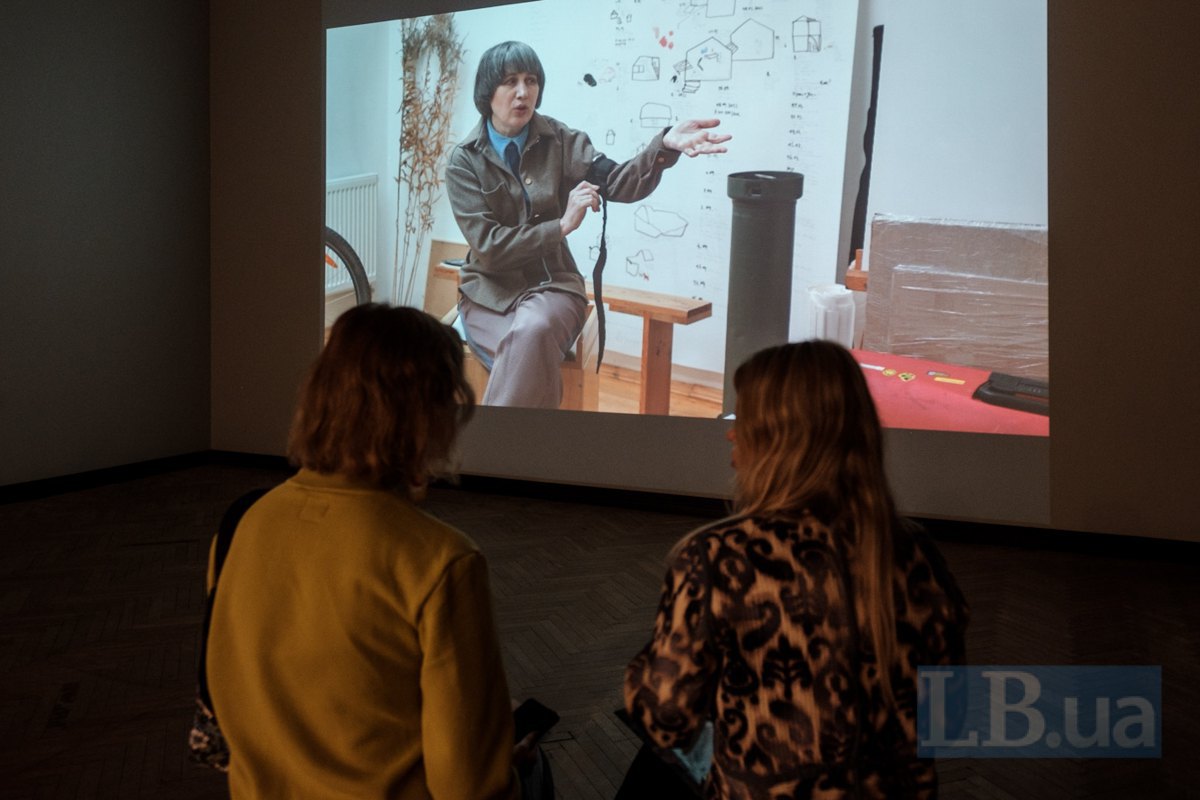
Tell us about Isa herself. What kind of family did she grow up in?
As for her own family, she was born in Taiwan. Her parents are alive, not involved in the arts, and very supportive of her, although they are naturally worried that she came here. When there was an air raid alert, she didn't even post about it so as not to cause concern. Her ancestors went through very difficult times. She notes that Ukrainians differ from Taiwanese in that we are currently at war and that we discuss everything, and our events are covered by the media, like a reality show. Her parents still do not reflect on this because it was a very closed topic for them. We are living through the trauma here and now, while her parents' generation has already completed this process. Such is the difference between generations.
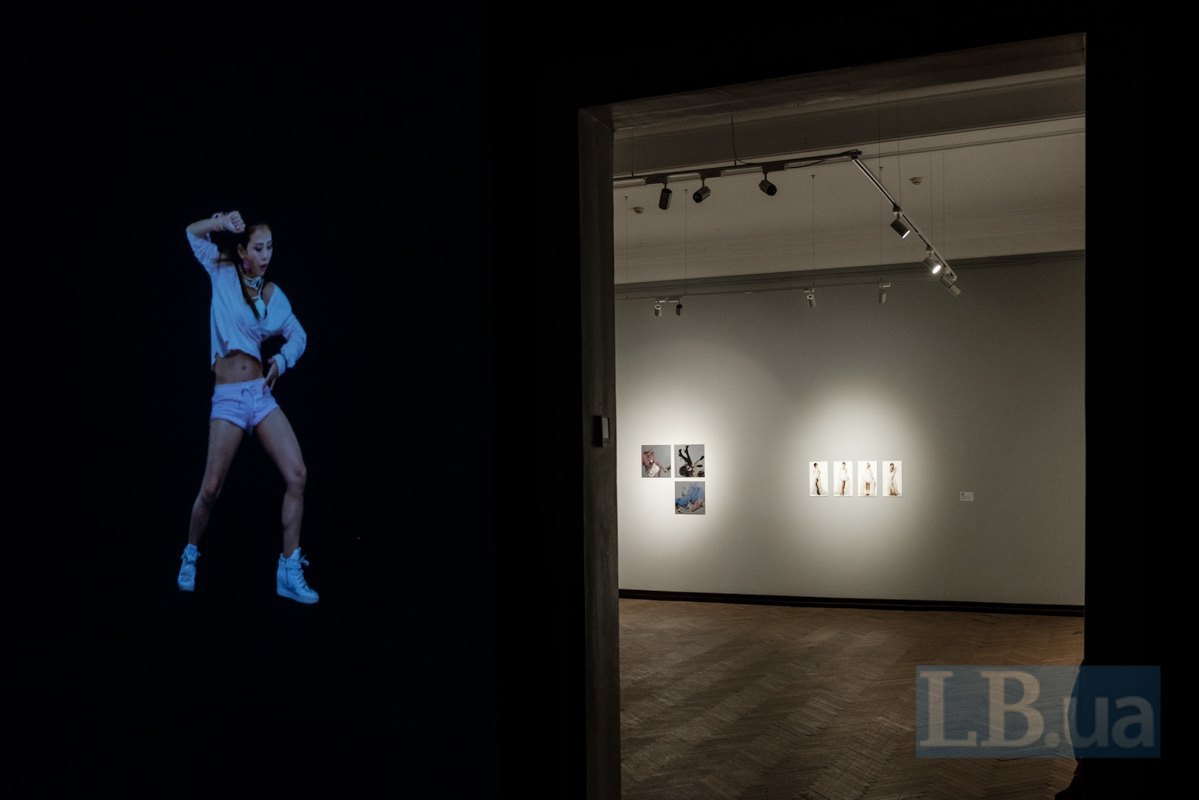
It is interesting how she raises such profound and difficult topics in her works through a form that is understandable and acceptable to mass culture.
Isa herself says that her theme is not purely feminist. She simply explores the history of women, our evolution, the difficulties we have faced and, perhaps, still face. Because there is still gender inequality in society. She talks about this. It is true that they have a progressive society, but inequality still exists. Even in such a developed country, and even foreign women, continue to work on their self-expression.
Often, discrimination against women occurs tacitly, without being enshrined in law or written into instructions. For example, hindering career development.
Isa has almost no female artist friends who are continuing their careers at her age with her level of experience. For most, men stand in their way. She stands out; her profession has been her life for over 20 years.
When we talked about the concepts and ideas we are putting into the Before the Future project, she said that in Ukraine she is rethinking happiness. At first I was surprised — how can you rethink happiness in this project? Where is the happiness here?
Returning to the topic of our self-depreciation. Do you agree that we sometimes do this in this war? Because it has become everyday life?
Yes, certain things do become part of our daily experience, and to a certain extent, this devalues them because they become a relative norm of life. For some, it is everyday life, for others, it is something else. In this project, I am trying to understand this for myself. People often tell me that I do a lot, that I tell the world about us, that I do projects, but I have an inner feeling that I could do more. Because women are also fighting, and I am here. And this is also a dialogue with myself. We talked a lot about this with Isa. I think everyone thinks about this. And it always seems that you are not doing enough.
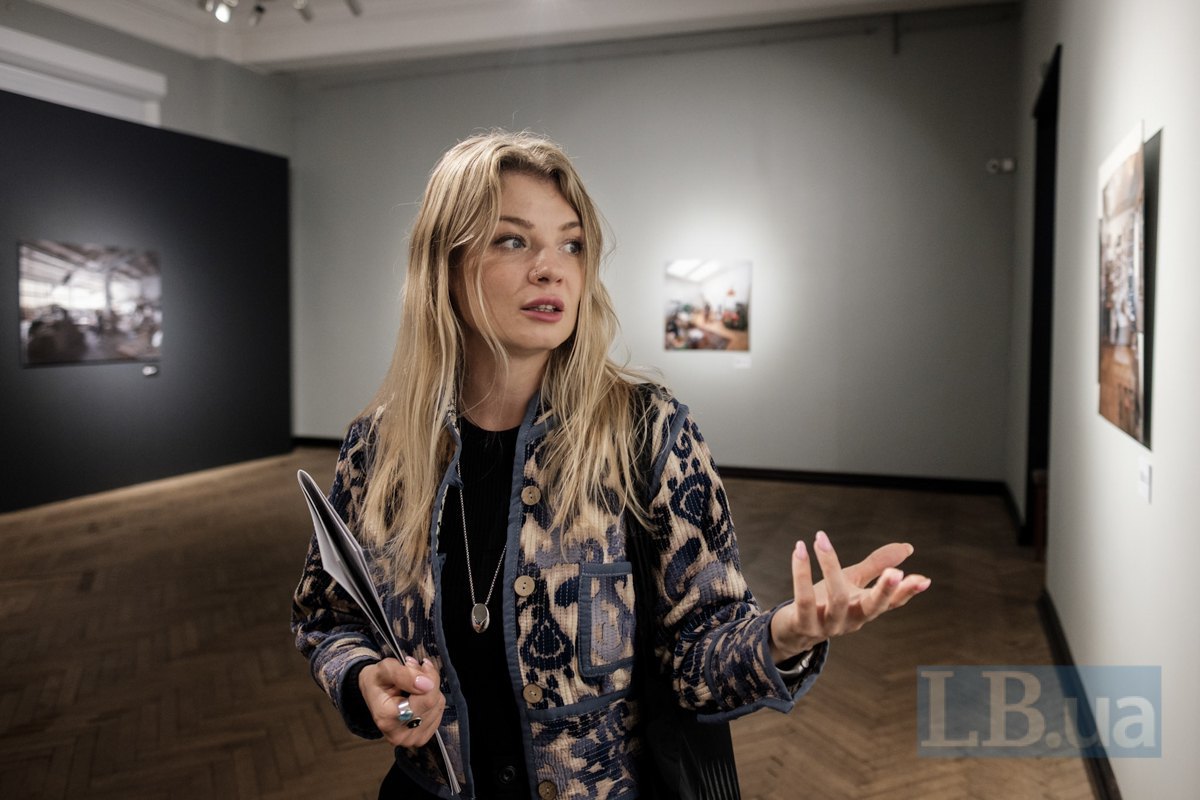
Perhaps Isa shared her own traumatic experiences? Did she have something that allowed her to communicate with characters who had gone through such difficult experiences?
I think that her long-term research into complex topics helps her understand how to communicate in such situations. Even when she researches artists, whether from New York or Ukraine, they all have difficult stories. In other words, she works with complex topics. This is her in-depth research. And these are topics of trauma, complex social narratives, people's stories. So she really knows how to do it. Isa is already like a psychologist. Empathy, of course, also helps.
When I was translating her, she understood what we were talking about. The heroines of the project shared very personal and emotional things. And she kept asking if she had asked something too painful, if everything was okay. And I explained that everything was fine, that on the contrary, they were ready to share. We don't cross the line, because I would see it. I moderated the process. And these were more like friendly conversations between artists. It helped that they were in context.
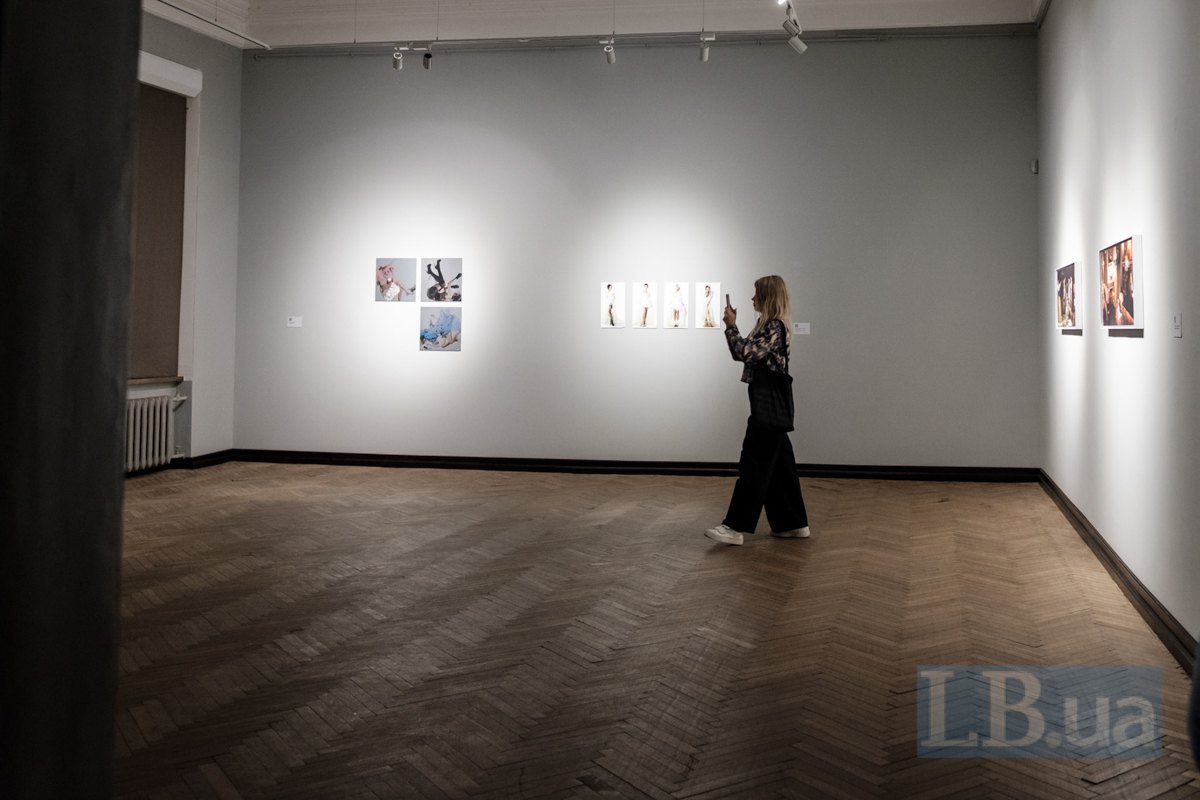
And how did she perceive Ukrainian?
The language is difficult. At first, it was hard for her to read people's faces because we are from completely different cultures. But when you communicate with people for some time, even if it's through English, even if it's basic English, you get to know people through their behaviour and expressions.
She was very interested in the fact that people did not react gloomily, but very often it was clear that they were having a hard time. And sometimes she spoke with tears in her eyes, unable to smile.
Once, Isa came to me and asked, ‘Marta, listen, maybe I'm saying something wrong, because people look at me and start crying.’ I replied that this is our way of showing emotion and that it's normal. Because she came from who knows where, is interested in us, does projects about us, asks how we are.
Now tears are especially legalised for everyone. That is, no one is surprised anymore if someone cries when the anthem is played, for example...
Yes, we don't need to explain anything. This is what one of the artists said very beautifully, and I included this text in the project. She said that it is difficult abroad because you are constantly explaining something, but at home you don't need to explain anything. Therefore, it is much easier morally here because here they understand you, your tears, that you cannot do something because you are in a certain state. Our inner empathy works differently. It is a wild contrast of grief and joy, boundless life and boundless death. But to an outsider, it was strange. She thought something was wrong with what she was saying.
To what extent is Taiwanese art currently represented in the world?
As we mentioned earlier, gender inequality is still an issue for Taiwanese artists. But Isa and her projects are visible and present in the world. It is easier now with the new generation, just as it is for us. But her generation is different; she is one of the few who have remained in this profession.
When it comes to Taiwan's international presence, they are investing resources in it. But the political situation is such that they have no official diplomatic relations, everything goes through China. And so they often establish or try to establish ties through cultural or trade and economic channels, since diplomacy is not possible.
They are not recognised at the political level because of China. And so they want to talk about themselves. Taiwanese art is present in other countries, but mostly thanks to proactive artists like Isa, or thanks to the support of the state itself. Even our project is a two-way support, because Taiwan supports Ukraine and because it wants to tell its story, to convey its context.
What a cyclical story...
In Ukraine, for example, there is no official representation of Taiwan. If we need a visa, we Ukrainians have to go to Warsaw. I've done this so often that they already know me there (smiles). No official representation, imagine that!
Is this because of our position?
Yes, because of the restrictions we have, because Ukraine does not recognise Taiwan. Although Taiwan helps Ukraine a lot.
By the way, the mayor of Lviv, Andriy Sadovyy, was at the opening of our project, and he was the first mayor of Ukraine to pay an official visit to Taiwan. This is because Taiwan is very supportive of the Unbroken network. Including financially, but this is not widely publicised due to political turmoil and a lack of diplomacy.
How did Isa arrange everything in Ukraine? Is it a difficult procedure for Taiwanese people at the moment?
Isa needed a visa. I was very worried about that. In general, this project had so many opportunities not to happen due to logistical issues.
So, it turns out that we don't have a representative office in Taiwan either? Does that mean she has to go somewhere else?
I know two other Taiwanese artists who came here to gather information for projects about Ukraine. One artist received a visa after numerous attempts in different countries, but only for five days. Five days! That means flying halfway around the world to be able to stay for five days. The other artist was luckier because he has a green card and connections to the United States. Isa and I considered the possibility that we might have to go to Japan or the United States to apply for a visa. But there were some changes in the procedure there, and it was possible to apply electronically. Isa tried it. Of course, invitations play an important role here, because in our case we are talking about a national museum. It worked, she was given a visa for a month, they don't give more than a month there. She arrived in the spring, when she was applying for a second visa to come back here. She needed two separate visas because she needed to stay longer than a month and then return. The first time, she was denied. I was shocked. I thought, how am I going to do this project? But we prepared other documents. I made another invitation to our association of gallery owners. I got a call from our Ministry of Foreign Affairs, we had a nice chat with them, and they gave her a visa. Both of them. Two separate visas. Now she can come and finish this project and stay here for a while. But yes, there were plenty of bureaucratic hoops to jump through.
I would also like to go to Taiwan for longer than a month. But our relations on both sides are what they are. However, I really hope that there will be progress on this issue as well.









